 |
Bromelia Contactgroep (BCG) P/a Botanische Tuinen Budapestlaan 17 3584 CD Utrecht ABN-AMRO IBAN: NL66 ABNA0421855185 tel.030-253 9281 |
From Newsletter 66 - May 2013
The Spring Meeting in Utrecht on April 7th 2013.
†
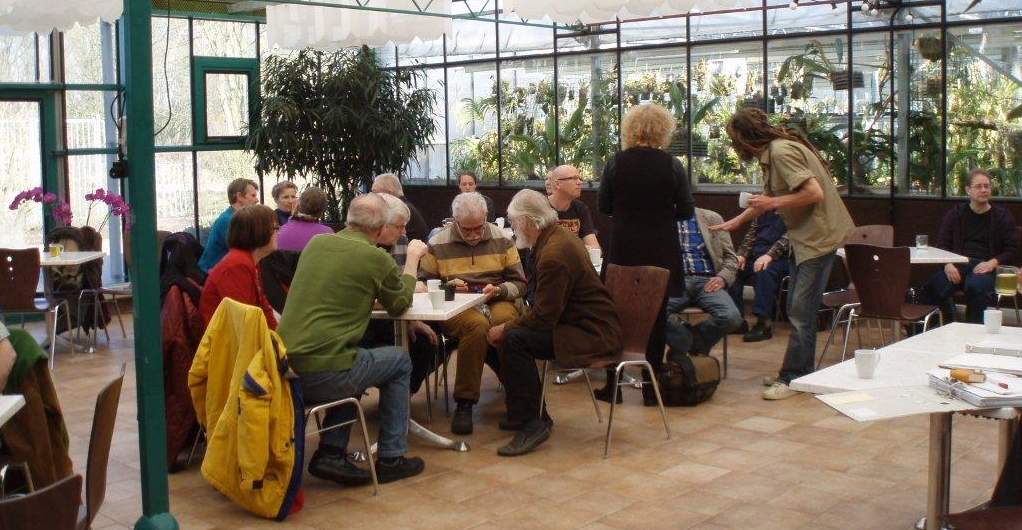
For the first hour or so (until roughly 11am) we enjoyed delicious coffee or tea, served as usual by the Gouda family, while greeting everyone and exchanging experiences and recent news. Meanwhile the auction table filled up with lots of plants people had brought and the plants intended for display and discussion were arranged in their proper place.
†
The chairman then welcomed everyone and started the house-keeping meeting, covering the usual subjects (attendance, finances, minutes of last meeting). He announced the dates of the next meetings (Autumn 2013 on Sunday, October 13th; Spring 2014 on Sunday April 6th; Autumn 2014 on Sunday October 19th). and said that, although there was uncertainty about the future of the Utrecht Botanical Gardens, the meetings were planned to take place in the conservatory on the Harvardlaan.
†
He then said that talks were planned with the Board of the Deutsche Bromelien Gesellschaft (DBG, German Bromeliad Society) about a possible membership for our society (affiliation). Our Board has for some time been referring to DBG activities, past and future, in which members of our society, themselves DBG members, already took part, auch as the possibility of going to the Bromelien Schutzsammlung, (the Bromeliad Protection Collection) the yearly invitation to take part in a combined plant import from the USA and so on. The DBG magazine Die Bromelie is very well worth reading and can be borrowed if BCG members want to read it.
†
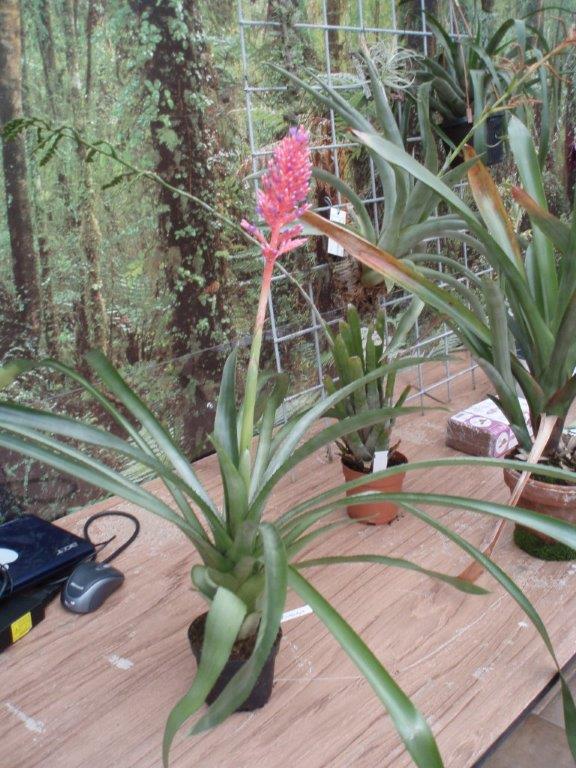 | 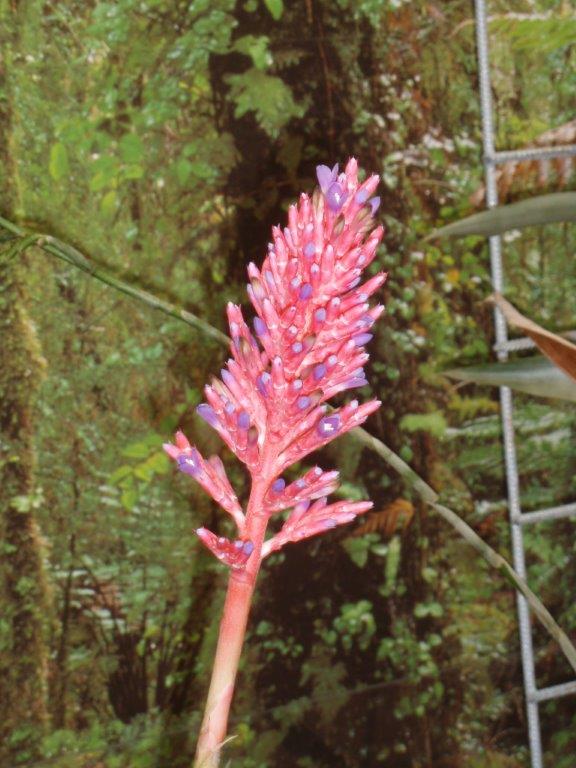 | 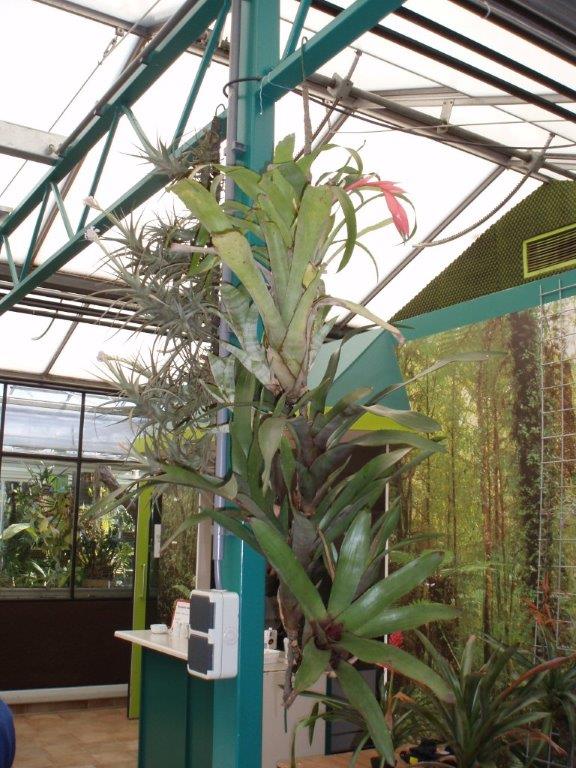 |
Once again, everyone's attention was directed towards the possibility of writing articles using our Wiki-document. A few members have already done this, either as a report on their travel experiences or as a description of how to grow a particular variety of bromeliad. The chairman encouraged the members to join in as much as possible. In relation with this, Jan Verkade, who is a member of the international society Dendrobatidae, asked about the possibility of exchanging articles with our society, Wiki versus Gifkikkerportaal (Poison-dart frog Portal). It was agreed that future articles would be sent to the Gifkikkerportaal editors.
†
In the literature about the Bromeliaceae, Josť Manzares is the author of "Jewels Of The Jungle: Bromeliaceae of Ecuador". So far he has brought out two books (Part I in 2002 and Part II in 2007) about the Aechmea genus. Albert Ebbink asked about the possible completion of Part III on the Tillandsioideae. He was also very interested in this part and wondered why it was taking so long. The chairman went into more detail about possible causes of the delay. It was far from certain that this book would ever appear, which would be a great pity!
†
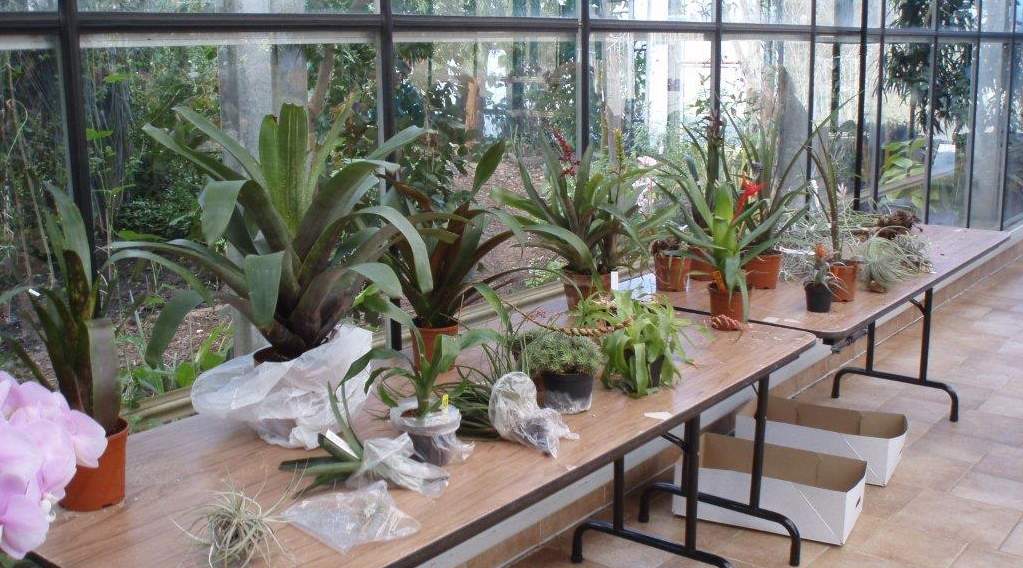
This ended the house-keeping meeting, which was followed by Eric Gouda leading the discussion of the plants on display. The following plants were shown: Quesnelia lateralis, from Brazil, met its lovely blue colours; Fosterella spectabilis, an attractive species, small for this genus; Racinae tetrantha, with orange flowerets; Quesnelia species Duida, flowering beautifully, originating in the similarly-named Cerro Duida mountains in Venezuela; Aechmea distichantha, probably the Schlumbergeri variety, with lovely pink inflorescence; Racinae pallidoflavens, from Peru, whose name is still under discussion; Tillandsia erubescens, a charming small species from Mexico; Tillandsia durangensis, described by Mrs. Renate Ehlers, endemic in Mexico; Tillandsia paleacea, with rather large flowers and of which there are several varieties; Billbergia distachia x nutans, a cross made by Eric Gouda, where the distachia side is clearly dominant. In particular, for this species the saying "the drier the more compact, the wetter the longer/robuster" applies. As for nearly all epiphytically-growing species, this one can grow on a branch and a rootball is not necessarily required. There does always need to be water in the beakers though! There followed Racinae spiculosa, which has a very wide distribution in Ecuador en Peru, and Racinae utriculata, similarly widely distributed through Central America.
†
Lastly, Gerard van Heusden's epiphyte branches were displayed and discussed. The various species that were attached to the branches had developed beautifully over the years and showed convincingly that formation of a so-called rootball is not necessary for the plant 's development, though pure (rain)water in the beakers definitely is. Gerard hangs the branches outside as soon as there is no more danger of frost and leaves them there until late in the autumn. They are wintered in the shed! The discussion finished with a variety of Tillandsia bergeri, a beautifully flowering Aechmea triangularis en a long rope with Tillandsia neglecta seedlings tied to it, from Eric Gouda's collection. The seeds were germinated in 2007 on shade-mesh and later attached to the rope. It showed how long these tillandsia seedlings can take to develop!
†
Then came the auction, presented most amusingly, of plants provided by the firm of Bak together with some plants members had brought along for it. Many members could take a new acquisition home!
†
After the lunch break Gerard van Heusden took us with him on a trip through Ecuador, the country he visited recently with a group of orchid-lovers. Everyone enjoyed the lovely slides, not only ones of beautiful bromeliads but also of butterflies, amphibians, orchids and more. At the end of this enjoyable lecture Gerard was thanked by all those present with hearty applause and two bottles of nice wine. Thus ended this fine bromeliad day and we all said our good-byes.
†
On behalf of the Board,
†
Roel Tomassen, text
Eric Gouda, layout en photos
††
Translation: MaryRose Hoare